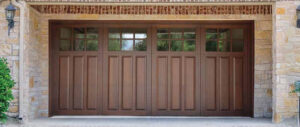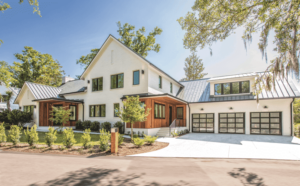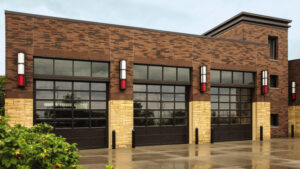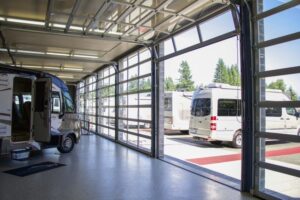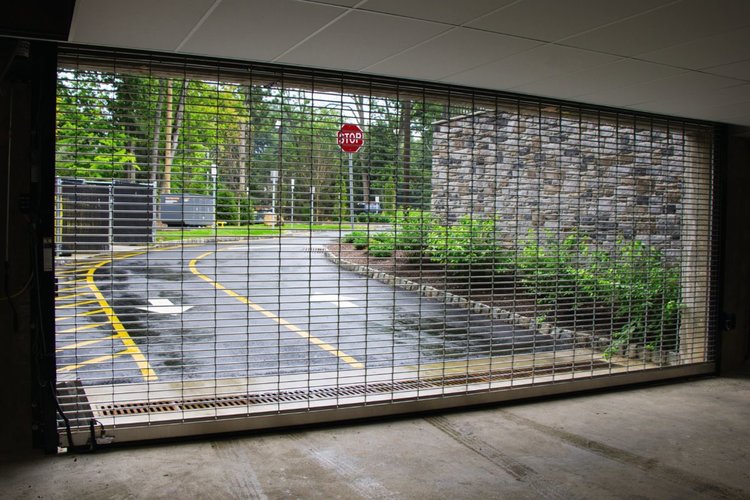A garage door is a complex system made up of various essential parts that work together to ensure smooth operation. Understanding these components can help with regular maintenance, troubleshooting, and making informed decisions when repairs are necessary.
Main Garage Door Components
A garage door consists of several panels, which can be made of materials such as steel, aluminum, wood, or fiberglass.
- Steel panels are durable and require little maintenance.
- Aluminum panels are lightweight and resistant to rust, making them ideal for coastal environments.
- Wood panels provide a classic and elegant look but require regular upkeep to prevent warping or rotting.
- Fiberglass panels resist moisture and denting, making them practical for humid regions.
Sectional garage doors rely on hinges to connect the panels, allowing them to bend as the door moves. These hinges come in different strengths, with standard hinges used in residential doors and heavy-duty ones for industrial applications. The movement of the door is facilitated by rollers that glide along the tracks. These rollers can be made of plastic, steel, or nylon, with nylon rollers offering the smoothest and quietest performance.
The tracks, mounted on either side of the door, guide its movement:
- Vertical tracks help support the weight of the door.
- Horizontal tracks hold the door in an open position.
Keeping these tracks free of dirt and debris and ensuring they remain properly aligned is essential for smooth operation.
A garage door is heavy, so a system of springs and cables is necessary to help balance the weight and enable easy lifting and lowering.
- Torsion springs, mounted above the door, provide a balanced lifting motion and tend to last longer than extension springs.
- Extension springs stretch along the horizontal tracks and assist in lifting.
- Cables carry the tension needed to lift and lower the door.
Because of the high tension involved, damaged springs or cables should only be handled by professionals.
A bottom seal at the base of the garage door helps keep out dirt, moisture, and pests, while weatherstripping along the top and sides improves insulation and prevents drafts from entering the garage.
Garage Door Opener Components
An automatic garage door opener simplifies operation by using a motorized system to lift and lower the door. The motor serves as the main power source and is paired with a drive mechanism that determines how the door moves:
- Chain-driven openers are budget-friendly but tend to be noisy.
- Belt-driven openers offer quieter and smoother operation.
- Screw-driven models use a threaded rod mechanism, requiring less maintenance and fewer moving parts.
- Direct Drive helps eliminate the need for belts or chains; they are considered to be more reliable, Than traditional garage door openers.
Most modern garage doors come with remote controls or keypads, allowing for convenient access. These remotes can be programmed for single-door or multi-door operation. Additionally, safety sensors, installed near the bottom of the door tracks, play a crucial role in preventing accidents by stopping the door if an object or person is detected in its path.
Another key feature in most garage door openers is the emergency release cord, which disengages the automatic system, allowing for manual operation in case of a power outage or mechanical failure. A wall-mounted control panel provides another way to operate the door from inside the garage. Some models even include advanced features such as vacation mode, which temporarily disables the opener to prevent unauthorized entry.
Overhead Garage Door Components
Overhead garage doors, also known as sectional doors, rely on a combination of reinforced structures to function effectively.
- A torsion bar, mounted above the door, works with the springs to assist in lifting.
- Bearing plates hold the torsion bar in place while allowing smooth rotation.
- Brackets secure many of the door’s critical components, including rollers, cables, and springs. Ensuring these brackets are properly fastened is crucial for safety and smooth operation.
- Reinforcement struts are used on larger doors to prevent bending or sagging over time.
A counterbalance system, which includes a set of springs and cables, ensures that even heavy doors can open and close with minimal effort.
Maintaining Your Garage Door Components
Routine maintenance is essential to keep a garage door operating smoothly and extend its lifespan.
- Lubricate moving parts such as rollers, hinges, and tracks to minimize wear and tear.
- Inspect cables and springs for signs of damage; broken components can pose safety risks.
- Keep tracks clean and free of dirt and debris to ensure smooth movement.
- Test safety sensors regularly to ensure they function properly and prevent accidents.
- Tighten loose bolts and brackets to prevent misalignment, which can lead to operational issues.
Clean and repaint door panels if necessary, especially in areas exposed to harsh weather.
Common Garage Door Issues and Troubleshooting
A garage door that becomes excessively noisy during operation may be experiencing loose hardware, worn-out rollers, or inadequate lubrication. Applying a silicone-based lubricant to moving parts and securing any loose bolts can often resolve this problem. If the door does not close completely, it may be due to:
- Misaligned safety sensors
- Obstructions in the tracks
Ensuring that these sensors are properly aligned and that the tracks are clear can often fix the issue.
A slow or jerky door movement could indicate:
- Worn rollers
- Misaligned tracks
- Spring balance issues
Checking these components and making the necessary adjustments can help restore smooth operation.
If the garage door opener fails to respond to the remote control, try the following steps:
- Replace the batteries
- Ensure there is no signal interference
- Reprogram the remote if necessary
If problems persist, consulting the garage door opener’s manual or calling a professional may be required.
What are the parts on a garage door?
A garage door is made up of multiple components that work together to provide smooth and reliable operation. Some of the key parts include:
Door Panels – The sections that make up the main body of the garage door.
Hinges – Connect the panels and allow the door to bend as it moves along the tracks.
Rollers – Small wheels that help the door glide up and down smoothly.
Tracks – Guide the movement of the door as it opens and closes.
Springs – Provide the tension needed to lift the heavy garage door.
Cables – Work with the springs to assist in lifting and lowering the door.
Bottom Seal & Weatherstripping – Prevents dirt, water, and pests from entering the garage.
Garage Door Opener Components – Includes the motor, drive mechanism, remote control, and safety sensors that automate the door’s movement.
What is the metal piece at the top of a garage door called?
The metal piece at the top of a garage door is called the torsion bar. It is an essential part of the torsion spring system, which helps counterbalance the weight of the garage door. The torsion bar, along with the torsion springs, ensures smooth and controlled opening and closing of the door. It is mounted above the door and rotates as the springs unwind and wind up, helping to lift and lower the door efficiently.
What is the garage door frame called?
The garage door frame is commonly referred to as the garage door jamb. It consists of the vertical and horizontal structural components that support and enclose the garage door. The frame includes:
Side Jambs – The vertical supports on either side of the door opening.
Header – The horizontal top support of the frame.
Trim or Stop Molding – The outer edge of the frame that helps seal the door when closed.
A well-installed garage door jamb provides stability and ensures proper alignment of the door with the tracks and rollers.
What are the most common garage door repairs?
Garage doors experience wear and tear over time, leading to common issues that require repairs. Some of the most frequent garage door repairs include:
Broken Springs – One of the most common problems, as springs wear out due to repeated use.
Damaged Cables – Frayed or snapped cables can prevent the door from functioning properly.
Misaligned or Bent Tracks – Tracks that are out of alignment can cause the door to stick or operate unevenly.
Malfunctioning Garage Door Opener – Issues with the motor, remote, or safety sensors can prevent the door from opening or closing.
Worn-Out Rollers – Faulty rollers can cause loud noises and jerky movements.
Weather Seal Replacement – Over time, the bottom seal and weatherstripping can wear out, allowing air and moisture inside.
Regular maintenance can help prevent these issues, but if a problem arises, it’s best to contact a professional for safe and efficient repairs.
When to Call a Professional
While some maintenance tasks can be handled at home, certain repairs require the expertise of a professional. Broken springs, frayed cables, or misaligned tracks should always be repaired by a trained technician, as these parts operate under high tension and can be dangerous to handle without the proper knowledge and tools.
If the garage door is off-track, it may indicate a more serious structural issue that needs immediate attention. Unusual noises, persistent balance problems, or failure to open and close smoothly are also signs that professional service is needed. Regular inspections by a technician can help identify potential problems before they escalate, ensuring that the garage door remains in optimal working condition.
A well-maintained garage door enhances security, improves convenience, and adds to the overall value of a home. Understanding the various components and their functions makes it easier to maintain and troubleshoot issues before they become costly repairs.
If you’re experiencing problems with your garage door, don’t wait! Contact OHD Bellingham at (360) 734-5960 for expert repair and maintenance services. Call Now!

